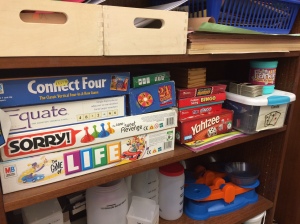Today, we celebrated our belated Pi Day! It was delayed due to inclement weather…

Though my #MTBoS friends were there to comfort me in my time of need!
@bkdidact that’s the rounded up version anyway, none of this truncated 3/14 crap
— Jonathan (@rawrdimus) March 13, 2017
Our spring trimester focus is always financial literacy. So, we spent most of last week researching recipes, planning for a shopping trip, going to the bank, shopping for ingredients, and making pies. Yes, I said it. We made pies for Pi Day, sue me! Now, finally the time had come to eat our pies, but first…we had to do some more math!
First we reviewed of some of the digits of Pi, highlighting that when rounded to the nearest hundredth it matches the numerical date of March 14th, which is subsequently known as “Pi Day” for this reason. I also wore my Pi shirt, which gives the students an opportunity to see that there are A LOT of digits in this number known as Pi and that I’m a nerd. We did, however, skip the traditional digit memorization activity for several reasons including working memory and tedious boredom.
Instead we estimated, explored, and discovered the circumference formula with our pies and some string.
Continue reading



